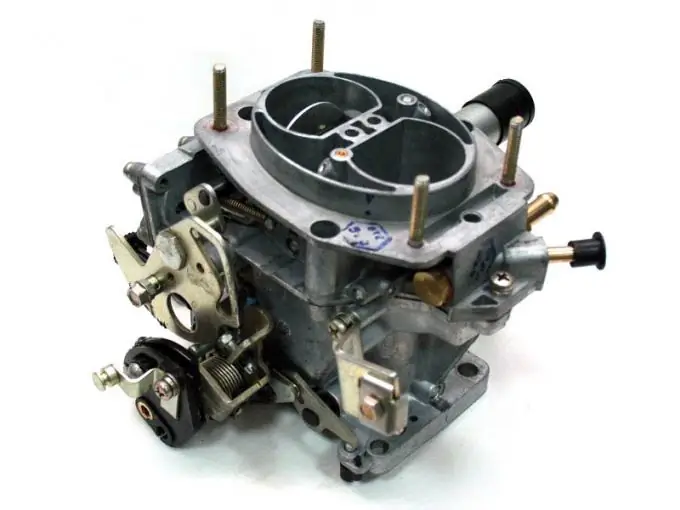- Author Maria Gibbs [email protected].
- Public 2023-12-16 03:05.
- Last modified 2025-01-22 17:47.
The engine is often referred to as the heart of the car, and the carburetor is often referred to as the heart valve. A lot depends on the correct setting of the carburetor: fuel consumption, acceleration dynamics, and the level of CO, etc.

Instructions
Step 1
To properly adjust the carburetor, you need to have sufficient knowledge and skills. There are two screws to adjust the carburetor. The first adjusting screw is responsible for the number of revolutions, and the second for the quality of the mixture. With their help, the engine idle speed is adjusted, as well as the CO content in the exhaust gases is adjusted.
Step 2
The entire idling system is autonomous. That is why the adjustment applies only to her. The mixture quality screw will only adjust the mixture for idle engine speed.
Step 3
Before adjusting the carburetor, you must carefully inspect and, if necessary, adjust the ignition system. The engine must be completely intact, as it will not be possible to correctly adjust the carburetor on a faulty engine. If these two points meet the standards, then you can adjust.
Step 4
If the carburetor adjustment is correct, then when the power is removed from the solenoid valve, the engine will stall. When the screw of the mixture "quality" is fully tightened, the engine should stall. If this does not happen, then there is most likely a hole in the diaphragm, which will lead to excessive consumption of gasoline. Replacing the solenoid valve, we leave the old idle jet, i.e. the one that came from the factory. After the adjustment, check if the throttle valve clearly returns to its original position when the gas pedal is released.






